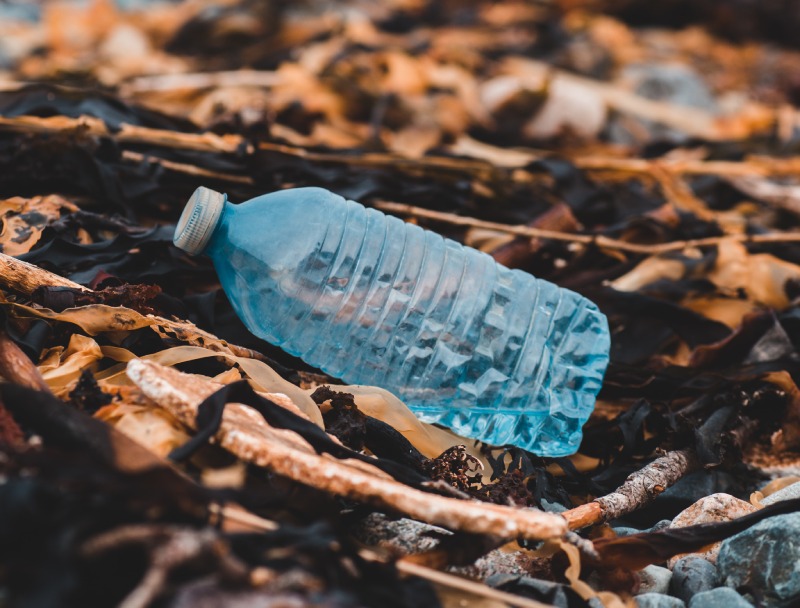Plastic pollution is a growing environmental concern worldwide. From single-use bottles to disposable bags, plastic products have become an integral part of our daily lives. However, one of the most alarming aspects of plastics is their persistence in the environment. Unlike organic materials that decompose relatively quickly, plastic can take hundreds, if not thousands, of years to break down. In this article, we’ll explore the reasons behind why plastic takes so long to decompose and the environmental consequences of this durability.
The Composition of Plastic
To understand why plastic resists decomposition, it’s essential to examine its composition. Plastics are synthetic polymers, made primarily from petrochemicals such as ethylene and propylene. These polymers are long chains of repeating molecules, which give plastic its durability and flexibility.
Components of Common Plastics
| Plastic Type | Main Component | Characteristics |
|---|---|---|
| PET (Polyethylene Terephthalate) | Ethylene Glycol and Terephthalic Acid | Used for bottles and food containers, transparent, lightweight |
| HDPE (High-Density Polyethylene) | Ethylene | Sturdy, resistant to chemicals, used for pipes and bottles |
| PVC (Polyvinyl Chloride) | Vinyl Chloride | Versatile, used in pipes, cables, and vinyl records |
| LDPE (Low-Density Polyethylene) | Ethylene | Flexible, used for plastic bags and wraps |
| PP (Polypropylene) | Propylene | Strong, heat-resistant, used for food containers and automotive parts |
| PS (Polystyrene) | Styrene | Lightweight, insulating properties, used for disposable cups and packaging |
These long molecular chains are bonded together through strong covalent bonds, making it difficult for natural processes to break them apart. In addition to the primary polymer, plastics often contain additives, such as plasticizers, flame retardants, and stabilizers, which further hinder decomposition.
Factors Affecting Decomposition
Several factors contribute to the longevity of plastic waste in the environment. These factors interact to create a challenging situation for plastic breakdown:
1. Lack of Microbial Activity
One of the primary reasons plastic persists in the environment is the limited microbial activity capable of breaking it down. Microorganisms play a crucial role in decomposing organic matter like food scraps and leaves. However, plastics are relatively new materials in the context of Earth’s history, and naturally occurring microbes have not evolved to efficiently metabolize them. While some microorganisms can partially degrade plastics, it occurs at a very slow rate.
2. UV Radiation and Oxidation
Exposure to ultraviolet (UV) radiation from the sun accelerates the degradation of many materials, but plastic is an exception. Instead of breaking down, plastics often undergo a process called photodegradation. UV radiation can weaken the plastic’s chemical bonds, making it more brittle and prone to fragmentation. This process is visible in the form of microplastics, small plastic particles that result from the breakdown of larger plastic items.
3. Environmental Conditions
The environment in which plastic waste is situated can significantly influence decomposition rates. Plastics that end up in landfills, where conditions are generally anaerobic (lacking oxygen), tend to persist much longer than those exposed to the open environment. In landfill environments, plastic may remain largely intact for centuries due to the absence of oxygen and microbial activity.
4. Size and Type of Plastic
The size and type of plastic also matter. Larger plastic items, such as plastic bottles or containers, may take longer to break down into smaller pieces. Meanwhile, some plastics, like polyethylene and polypropylene, are more resistant to degradation than others, like polystyrene.

Environmental Consequences
The durability of plastics has far-reaching consequences for the environment, wildlife, and human health:
1. Wildlife Harm
Plastics that do not decompose can pose significant threats to wildlife. Marine animals may ingest or become entangled in plastic debris, leading to injury or death. Additionally, the accumulation of plastic in ecosystems disrupts food chains and can harm entire ecosystems.
2. Microplastic Pollution
The breakdown of larger plastic items into microplastics has become a widespread issue. These tiny particles can infiltrate water sources and soil, potentially entering the food chain and posing health risks to both wildlife and humans.
3. Soil and Water Contamination
Plastic waste in landfills can contaminate surrounding soil and groundwater with harmful chemicals. Leachates from landfills can carry these toxins into water bodies, affecting aquatic ecosystems and human drinking water supplies.
4. Economic Costs
Cleaning up plastic waste and mitigating its environmental impacts come at a significant economic cost. Communities and governments must allocate resources to manage plastic pollution, diverting funds from other essential services and initiatives.
Promoting Plastic Decomposition
While plastic decomposition is a challenging problem, there are steps that individuals, communities, and industries can take to address it:
Reducing Plastic Use
The most effective way to mitigate plastic’s impact on the environment is to reduce its use. This can be achieved through the adoption of reusable products, minimizing single-use plastics, and supporting policies that encourage sustainable alternatives.
Recycling and Circular Economy
Efforts to increase plastic recycling rates are crucial. By recycling plastics, we reduce the demand for new plastic production and divert waste from landfills. Additionally, the concept of a circular economy encourages the reuse and repurposing of plastics, extending their lifespan.
Innovation in Materials
Researchers and industries are exploring innovative materials that are biodegradable and environmentally friendly. These materials aim to provide the same functionality as traditional plastics while breaking down more readily in natural environments.
Waste Management
Improving waste management practices, such as proper disposal and landfill management, can help contain plastic waste and reduce its environmental impact. Advanced waste-to-energy technologies can also be explored to convert plastics into energy.
Conclusion
The longevity of plastic in the environment is a pressing environmental issue with far-reaching consequences. Understanding why plastic takes so long to decompose sheds light on the complex challenges involved in mitigating plastic pollution. Efforts to reduce plastic use, promote recycling, and invest in innovative materials are essential steps towards a more sustainable and plastic-free future. It is incumbent upon individuals, communities, and industries to take action to protect our planet from the scourge of persistent plastic pollution.





